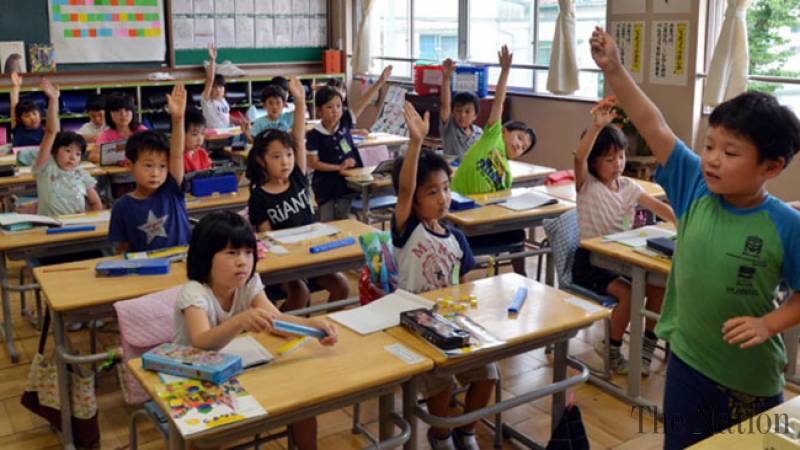
The Japanese education system is unique and education is the foundation of Japanese society. The Japanese school system has exclusive and special features and is neither influenced by the American or British educational system. It is also different from the other Asian systems. It is purely Japanese in essence and nature and philosophy. The basic purpose is to spread of education so that an educational-based and knowledge society emerges. Competition comes much later.
We can learn a great deal from the Japanese educational system to transform our grueling and ever-problematic education system from the bottom to top. We remained unable to transmit universal education far and wide and we miserably failed in our experiments. The Japanese educational system could be the final resort to introduce a universal education in our country without looting parents and creating segregated schools systems.
Japan introduced universal education for all by 1868. All parents were ordered to send their school age children to schools. This age group cannot be seen roaming around in streets, markets, parks, and work places. Police was deployed to arrest any such children along with their parents and send them to prisons.
Even after 70 years of our independence, we can often see school age children in streets, markets, parks, and work places. Majority of them are begging. We have not developed a system to take care of them. Should we follow the Japanese policing system of arresting all beggars and school age children? Or should we continue with our own lose system.
Japanese school children lead the world in numerical and literacy skills. What mattered was the quality of lessons given to Japanese children instead of quantity of lessons. The Japanese alphabetic has 46 characters each of Hiragana and Katagana, making them a total 92 characters. These characters are pictographic and children need to learn them by heart. School children also learn around 1006 Chinese language characters known as Kanji. The learning of these characters is the essence of school children’s intelligence.
Japanese school children do not take any examination until they reach grade 4 at the age of ten. Just small tests are given to them. This is done to develop their characters, manners, and behaviors to interact with society. Students study quietly and independently in class rooms. Class room decorum is always maintained. See what happens in our school when a teacher is absent or late for few minutes. The whole order is turned upside down.
For the Japanese educational system, elementary school (Shogakko) is more important where they get education up to six class. Elementary education is compulsory and started in 1886 during the Meiji Era. This education is totally free of cost. Children take public transport such as trains and busses to reach school and go back home. Each class has 5-10 minutes break.
In Japan all junior school children wear a uniform. They never come late or skip from schools. A standardised healthy meal is provided to all of them in the classroom, which they pick up from the kitchen at 12:00 noon. Teachers and students eat together and forge strong bonds of friendship and strong belonging. They eat the same food. They also clean up the service portions by their own. They have a strong sense of belonging with their school. They clean up their class room, sweeping, mopping the floors and cleaning other portions of the schools, clapping erasers, and scrubbing the toilets, and grounds. They paint the walls and gate where necessary. They do not feel shy or feel hesitant in doing so because they love their schools.
They feel comfortable and happy at school. They have a sense of security there. They carefully listen to teachers and maintain high respect of their teachers. A high percentage of students attends after-school workshops and programs of different interests and they remain busy with their practical learning until evening.
Unlike American schools, violence is not a characteristic of Japanese school. Schools function peacefully. Parents are not on strike against raise of fee or and other issue. The Ministry of Education in Japan takes care of all such issues instead of cracking them on streets and questioning the sanctity of education.
There are around 3.5 million primary schools in Japan, while its population in 127 million. According to the Educational Planning and Management Report, Government of Pakistan, there are only a total of 145,829 primary schools, out of these 125,573 (86%) are in the public sector, whereas, 20,256 (14%) are in the private sector. Pakistan’s population exceeds 200 million, adding 73 million people to that of Japan.
With an already low level of primary schools and with a mushroom growth of private and expensive education, it is difficult for Pakistan to achieve universal primary education and to get out of the poverty trap. The Japanese educational system opens our eyes and demands a revolutionary primary education policy.
[“Source-nation”]




